 |
 |
 |
| |
Five Times Higher Risk of ART Nonadherence on Days of Heavy Drinking
|
| |
| |
10th IAS Conference on HIV Science (IAS 2019), July 21-24, 2019, Mexico City
from Jules: I maintain we will see resurgence of non adherence in older aging HIV+ >65 due to cognitive impairment & opioid therapy and increased illicit drug use by older HIV+ as avoidance due to suffering consequences f aging & cognitive impairment & frailty and for pain.
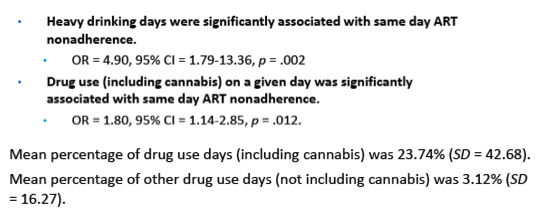
Mark Mascolini
On days when people with HIV drink alcohol heavily, they run 5 times higher odds of nonadherence to antiretroviral therapy (ART), according to results of a study at Rhode Island's Brown University [1]. Illicit drug use nearly doubled chances of nonadherence.
Despite well-documented benefits of ART, a 20-country meta-analysis estimated at least 90% adherence in only 62% of people with HIV [2]. The Brown researchers noted that abundant research links substance use--including alcohol use--to poor adherence, but much of this work has been cross-sectional. Exploring links between daily alcohol consumption and nonadherence, one prospective study found that odds of nonadherence rose on days when people with HIV drank alcohol and that each additional drink upped the odds 20% [3].
The new study aimed to assess the relationship between daily use of alcohol and other drugs and objectively measured antiretroviral adherence. The study population came from an ongoing trial of a mobile health intervention to increase antiretroviral adherence [4]. This analysis involved 53 people in care for HIV in the Northeastern United States who had adherence monitored by electronic pill box in the 14 days before randomization. Researchers interviewed participants to determine their alcohol and drug use during those 14 days. Everyone was at least 18 years old, reported less than 100% adherence, and had a viral load above 20 copies in the past 6 months. The study excluded people with cognitive impairment or active psychosis.
Heavy drinking meant 5 or more drinks daily for men and 4 or more drinks daily for women. Nonadherence for each day meant not opening the electronic pill box within 2 hours before or 2 hours after a scheduled dose.
Among 53 study participants, 38 (71.7%) were men, 35 (66%) white, 13 (24.5%) black, and 7 (13.2%) Hispanic. Most people worked full time (43.4%) or part-time (20.8%), while 24.5% were retired or disabled and 9.4% unemployed. About one quarter of participants had a viral load between 20 and 50 copies, one quarter between 51 and 200 copies, and half above 200 copies. Age averaged 46.7 years, antiretroviral adherence 78.7%, and time since ART initiation 134.5 months (11.2 years).
Participants rated an average 2.23% of days as heavy drinking days, an average 23.74% of days as drug-use days (including cannabis), and an average 3.12% of days as other-drug use days (not including cannabis).
Hierarchical linear modeling regressed ART nonadherence onto same-day alcohol use or any drug use, considering any alcohol use and heavy alcohol use separately. This analysis linked heavy drinking days to almost 5-fold higher odds of same-day ART nonadherence (odds ratio [OR] 4.9, 95% confidence interval [CI] 1.79 to 13.36, P = 0.002). Any drug use (including cannabis) conferred almost twice higher odds of same-day nonadherence (OR 1.80, 95% CI 1.14 to 2.85, P = 0.012). Any drinking or other-drug use did not predict same-day nonadherence.
The researchers noted that their findings are consistent with previous work tying heavy alcohol drinking to multiple problem behaviors. Results also reinforce the distinction between any drinking and heavy drinking.
References
1. Ramsey SE, Ames EG, Uber J, Habib S, Clark S. Gastrointestinal disorders following initiation of dolutegravir, elvitegravir, raltegravir or darunavir. 10th IAS Conference on HIV Science (IAS 2019), July 21-24, 2019, Mexico City. Abstract LBPED35.
For e-poster: https://programme.ias2019.org//PAGMaterial/eposters/4800.pdf
2. Ortego C, Huedo-Medina TB, Llorca J, et al. Adherence to highly active antiretroviral therapy (HAART): a meta-analysis. AIDS Behav. 2011;15:1381-1396.
3. Parsons JT, Rosof E, Mustanski B. The temporal relationship between alcohol consumption and HIV-medication adherence: a multilevel model of direct and moderating effects. Health Psychol. 2008;27:628-637. https://www.ncbi.nlm.nih.gov/pmc/articles/PMC2666539/
4. ClinicalTrials.gov. Mobile health application to improve HIV medication adherence. ClinicalTrials.gov identifier NCT02676128.
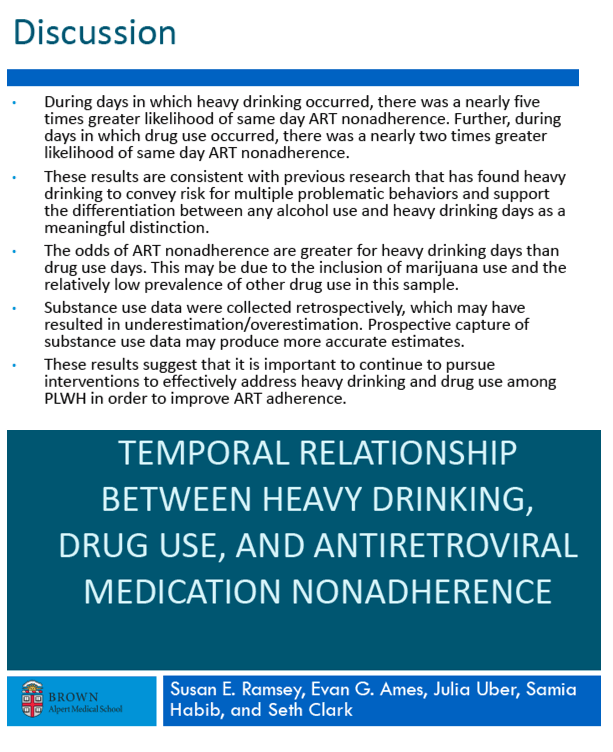
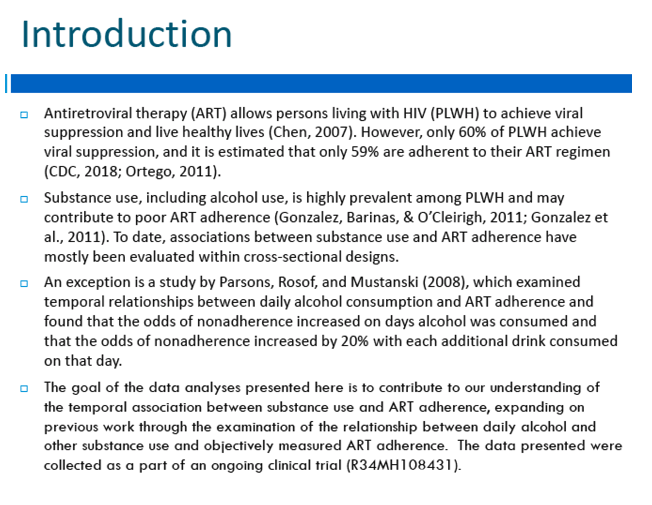
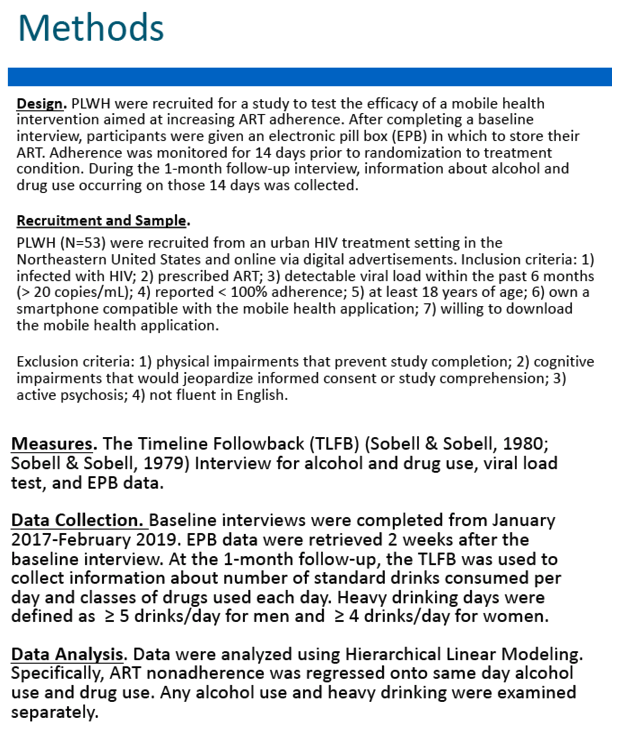
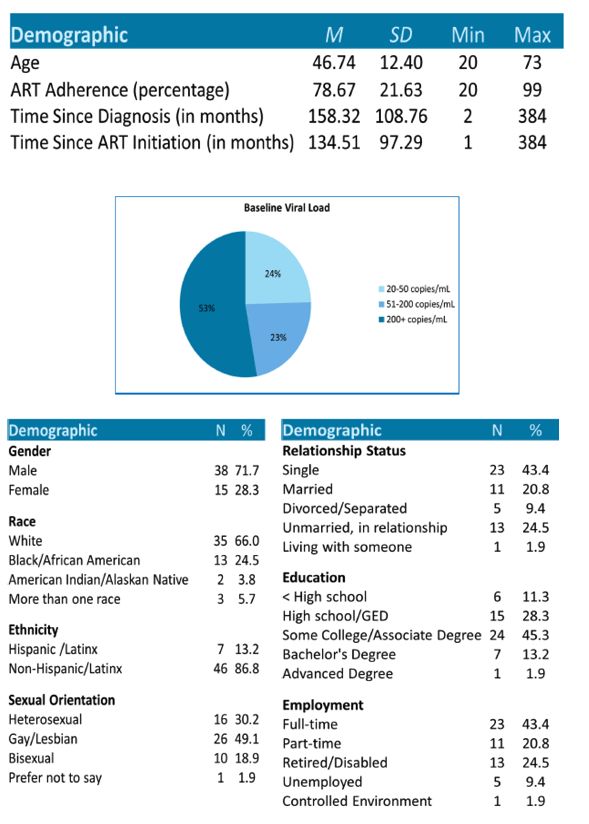
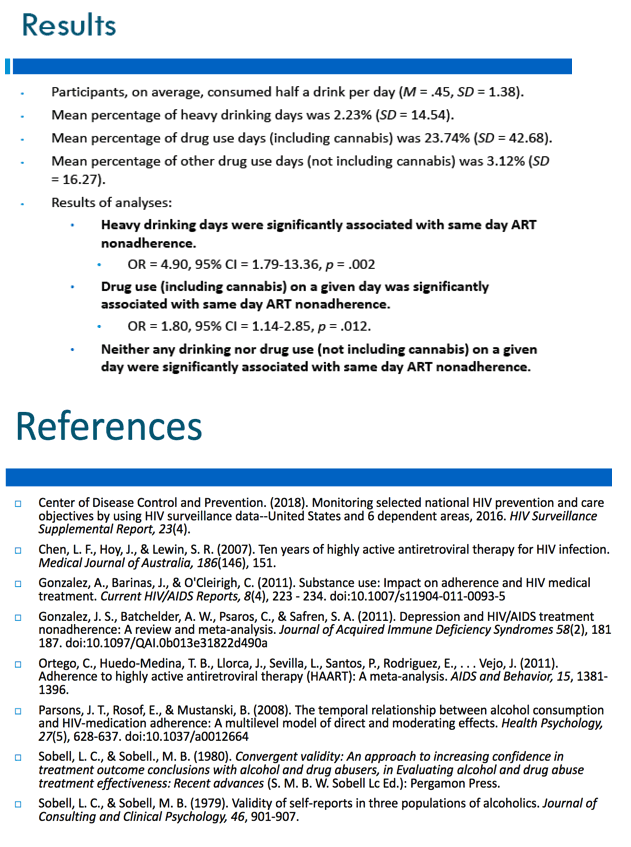

|
| |
|
 |
 |
|
|